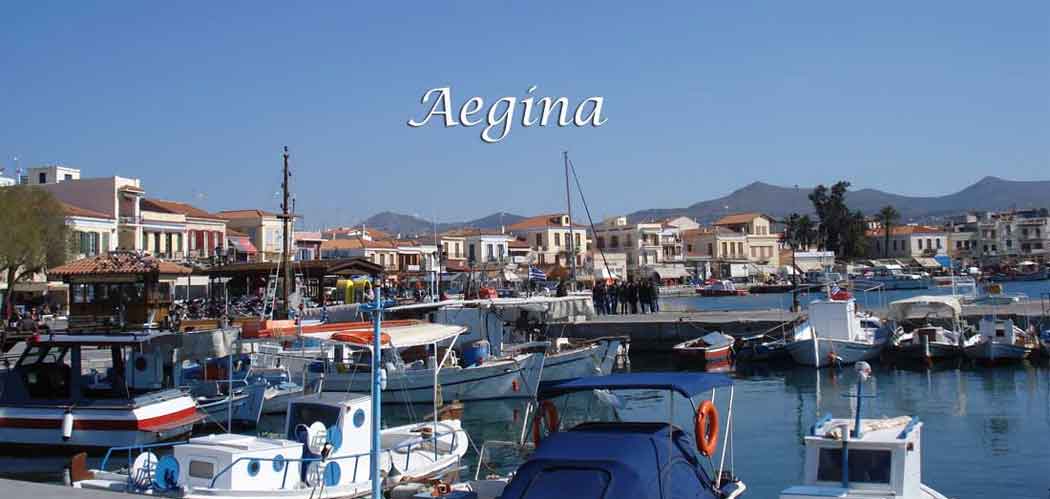What to see in Aegina
Temple of Aphaia
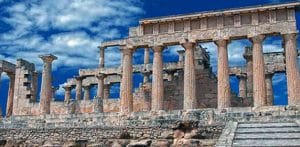
Afaia has been identified by many researchers with Vritomarti and also with Diktynna Artemis. The myth states that Afaia fled to Aegina and hid in a forest, to escape the love rage of the Cretan King Minos. In this forest the Aeginites founded a sanctuary where they honored her. The temple was first built in 570-560 BC but was destroyed by fire.
Archaeological Site of Kolona
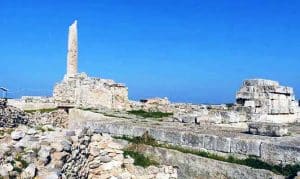
The first excavations at the archaeological pillar site in Aegina began as early as the 19th century, the first systematic excavation began in 1921 by Welter. German, Austrian and Greek archaeologists have worked from time to time in the excavations that continue to this day.
Everything shows that in this particular location there was a strong prehistoric settlement with great development. The characteristic column that is preserved today in the archaeological site on top of a hill belongs to a temple of Apollo that was built around the end of the 6th century BC.
Archaeological site in Livadi
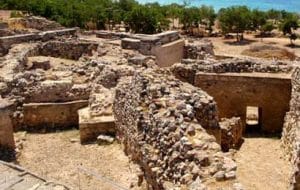
Excavations in the area have revealed ancient tombs, mound remains and tombs of of those who took part in the battle of Salamina.
Immediately after the archaeological site in Livadi we will find the all-white church of Agioi Anargyri and next to it the sandy beach of the same name.
Mansion houses
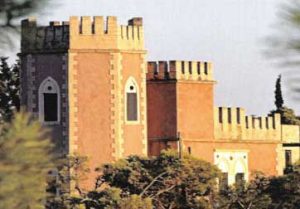
The mansion of the hydra family Voulgaris (shortly before Santa Claus in Perivola, built in 1767)
Historian Finley’s House in Asomatos (built 1826, Red Castle)
The house of Kontostavlos (built in 1829, in Faros)
The house of G. Ireiotis-Kontogiorgis (built in 1817, today houses the Historical & Folklore Museum of Aegina)
The house of admiral Kanaris (near Ethnegersias Square)
The house of Varvakis
Municipal theatre
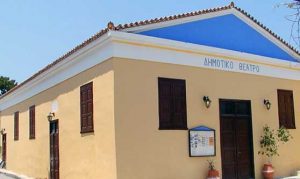
A cultural center where cultural events of clubs, private bodies and the municipal authority are organized there. Testimonies say that it existed before the Kapodistrian era, but we do not know exactly its use. In 1828 it was initially repaired by the Architect Theodoros Valianos and later by St. Kleanthi and E.Schaubert, and is used as a co-educational School and then as a preparatory School that prepared the students who intended to study at the upper Central School (Einardeio).
Today it is used as a Municipal Theater and for cultural events of the island. The Theater of Aegina is another emblematic building on the island. Cultural heritage of the action of Ioannis Kapodistrias in his effort to rebuild the modern Greek state. The project belonged to the family of Kapodistrian Buildings, which formed the central structure of Greek government buildings after the revolution of 1821.
Einardio Foundation
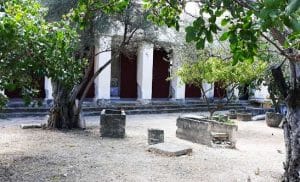
A landmark decision for the Greek education system and for Greece as a whole. The Einardian School was built in 1830 according to the plans of the architects S. Kleanthi and E. Schaubert with money offered mainly by the Swiss banker Philhellenas G. Eunardos, a friend of the Governor, and Philhellenic organizations in Switzerland.
A large part of the Greek cultural heritage is gathered in a historic corner of the island. The Einardian Foundation and the rest of the Kapodistrian Buildings are a point of reference in Aegina. The Einardian Foundation is located in the city of Aegina. It is easily accessible on foot from the main port of Aegina, but also from all the other attractions of the city.
Historical and Folklore Museum
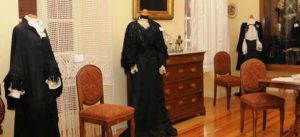
Aeginetan lace made with copanelli, white embroidery and various decorative items. On the ground floor we can visit the “Village House” with objects of daily use, textile items, agricultural and
The Government House
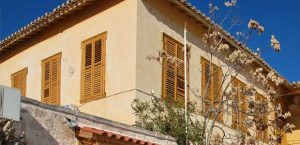
Christos Kapralos Museum
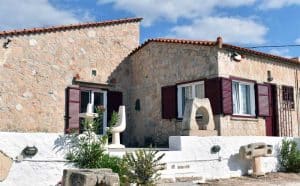
The Christos Kapralos Museum in Aegina hosts in its rooms and outdoor space a significant number of works from all periods of the artist from 1963 to 1993, during which time he worked mainly on the island of Aegina.
Using a variety of materials (wood, copper, marble, local porolite, plaster, etc.), Christos Kapralos has to present paintings, sculptures, engravings, ceramics and terracotta, among others.
His work is inspired by people’s everyday life, by peace and war, but also by his relationships with his friends and relatives. He represented Greece at the Venice Biennale in 1962 and participated in the São Paulo Biennale in 1975.
Today his works adorn private collections and museums in Europe and America. Some of his most important works that can be admired in this museum are the copy of the frieze “The Monument to the Battle of Pindos”, inspired by the Greek revolution against the Germans, which today adorns one of the halls of the Greek parliament. Also, the bronze statue “The Mother”, placed opposite the museum, gazes at the sea and symbolizes the Greek mother waiting for her sailor son.
The Orphanage
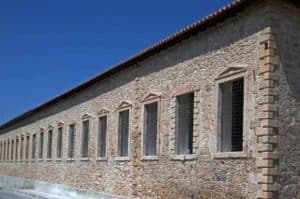
It was created based on the plans and supervision of the Architect Theodoros Valianos, and even today it stands imposingly on the edge of the city. Construction of the building began around the spring of 1828 and was completed a year later. Initially, the purpose of creating the building was to house and treat the orphans of the liberation struggle.
At the same time, it also functioned as a co-educational school, since it housed professional sewing, carpentry, watchmaking, bookbinding, shoemaking, printing, etc. workshops. The first National Library, the National Printing Office, the first Archaeological Museum with the Director Andrea Moustoxydis Corfu scholar, the first Numismatic Collection, Conservatory, etc. Later the Orphanage functioned as a Military School of Evelpida, a sanitarium, a psychiatric hospital but also as a maximum security prison for criminal and political convicts. A building that was an important place for modern Greece.
Palia Chora
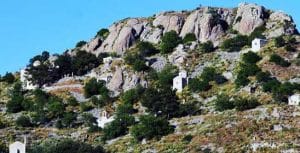
In the same fortified position, in ancient times there was the city of Oia or Oii, many of its architectural elements were used in the building of the new city. In Paliachora today, only 38 churches are preserved in good condition, which give us a measure of the city’s development during the Venetian occupation. Unfortunately, no elements of the city’s fortifications or urban architecture survive, as in the centuries that followed life moved back to the coastal area of Aegina
The Tower of Markellos
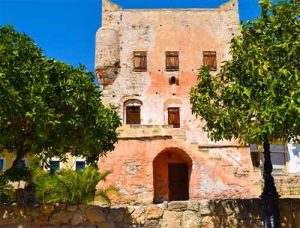
The tall imposing red building impresses visitors for its Peloponnesian-style construction and battlements. The building also housed the treasury of the Greek State for a while.
The Tower took its name from the MP Spyros Markellos. Great figures of the time were found in Pyrgos as Ioannis Kapodistrias used it strategically.
